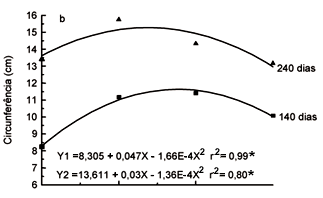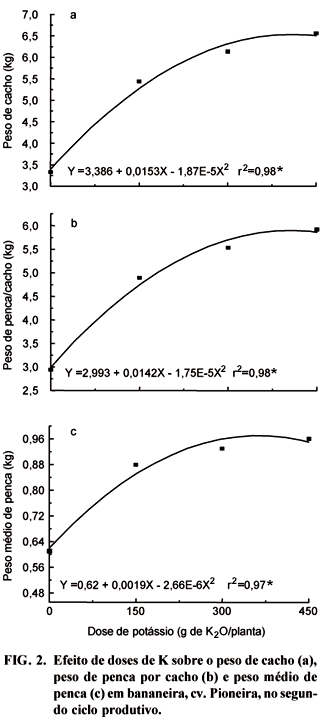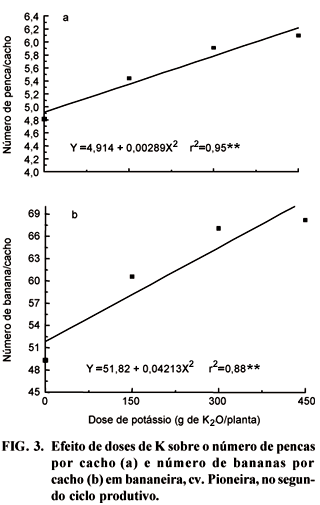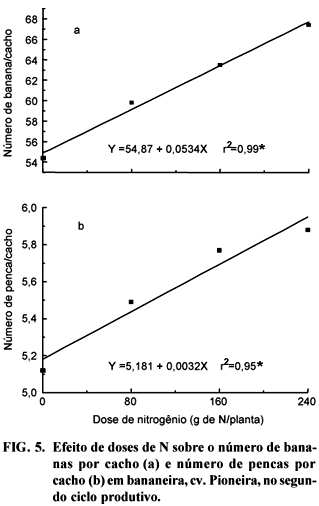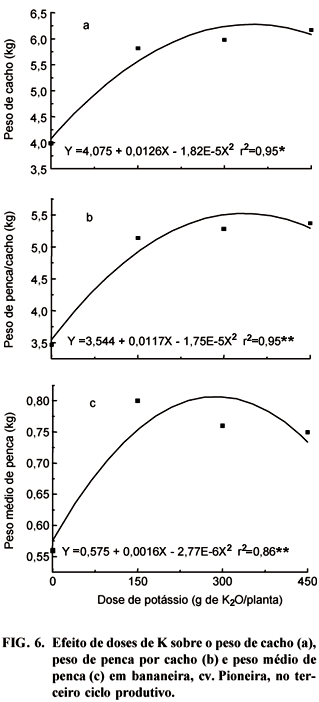The effect of the N and K fertilization on the development and production of the banana plant (Musa spp.), cv. Pioneira, was evaluated in an experiment carried out in Capitão Poço county, Pará State, Brazil, in a Yellow Latosol, using a randomized blocks design, in factorial arrangement of 4x4. The treatments were: 0, 80, 160 and 240 g of N per plant per year; 0, 150, 300 and 450 g of K2O per plant per year. Urea and potassium chloride were used as nutrient sources. The results of plant growth showed that there was effect of N on circumference of pseudostem and plant height. The quadratic model was better adjusted to all the variables. The results of production of the second cycle indicated that K increased quadratically the bunch weight, hands weight per bunch and average weight of hands, with production increments of 73, 76 and 39%, respectively, in comparison to the treatment without potassium. The nitrogen application promoted a linear increase of the weight of bunch and hands per bunch, with increments of 32 and 30%, respectively, proportionate by the highest level of N, in relation to the treatment without this nutrient. During the third production cycle only K application influenced the weights of bunch, of hands per bunch and average weight of hands, with increments of 39, 40% and 26%, respectively.
Musa; mineral nutrients; nutrient uptake; productivity


